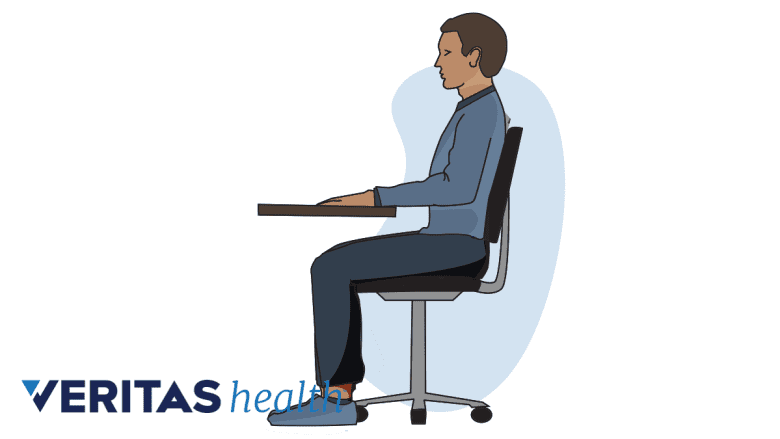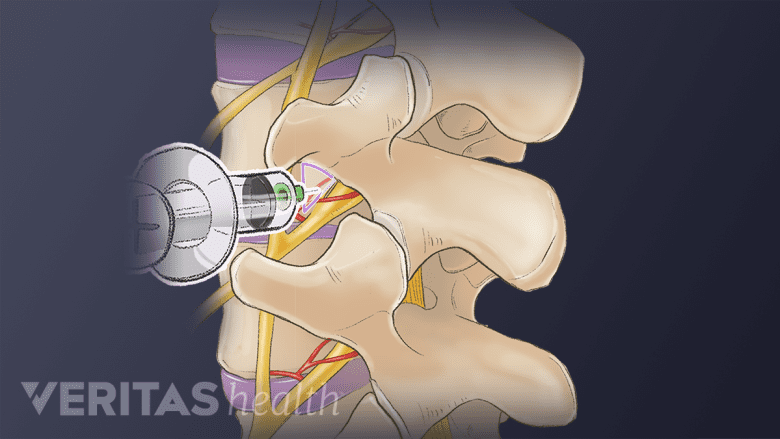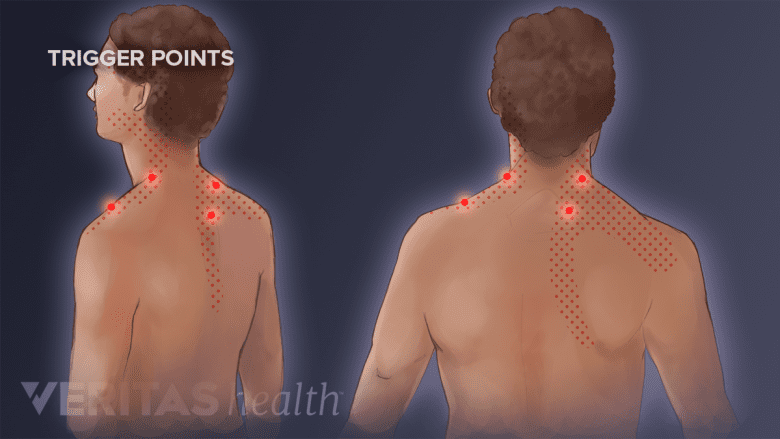There is a wide range of treatment options available for cervical radiculopathy. The treatment will depend mainly on the underlying cause of the patient's symptoms as well as the severity of signs and symptoms.
Nonsurgical treatments are usually tried first. If there is no improvement in cervical radiculopathy symptoms after 6 to 12 weeks of treatment, then surgery might be considered.
In This Article:
Nonsurgical Treatments
Nonsurgical treatments for cervical radiculopathy typically include one or more of the following:
Rest or activity modification

Enhancing posture while sitting or driving can help alleviate discomfort and strain.
Limiting strenuous activities, like sports or lifting heavy objects, or using better posture while sitting or driving might provide some relief.
Watch: Video: 6 Tips to Improve Posture While Sitting
Physical therapy

The chin tuck exercise strengthens the muscles that support a good posture.
A physical therapist or other certified health professional might prescribe an exercise and stretching routine that is specific for the patient’s needs. Improving the neck and back’s strength and flexibility may help them to hold better posture and become more resistant to pain.
See Physical Therapy for Neck Pain Relief and Neck Exercises for Neck Pain
Ice and/or heat therapy

Heat and ice therapy may help alleviate neck or arm pain.
Applying an ice pack or a heated gel pack to the neck might offer pain relief for some people. For example, applying cold therapy after an activity-related flare-up of pain may help reduce inflammation and pain. When applying ice or heat therapy, it is important to have a layer that prevents direct contact with the skin, and limit applications to 15 or 20 minutes at a time with about a 2-hour break in between.
Watch How to Apply Heat Therapy for Neck Pain Relief Video
Medications

OTC medications may reduce neck pain in the short term.
Over-the-counter nonsteroidal anti-inflammatory drugs (NSAIDs) are usually the first medications tried to relieve inflammation related to cervical radiculopathy. Examples could include aspirin, ibuprofen, or naproxen. If symptoms are not reduced or well managed, stronger medications may be prescribed on a short-term basis, such as prescription-strength NSAIDs, muscle relaxants, or opioid-based medications.
Cervical epidural steroid injection

A cervical epidural steroid injection may provide pain relief by reducing inflammation.
If imaging has confirmed which nerve root is inflamed or compressed, a cervical epidural steroid injection may be considered. Using contrast dye and fluoroscopy (x-ray) guidance, an injection is carefully placed in the cervical spine’s epidural space to bathe the affected nerve root in a steroid medication.
Watch: Cervical Epidural Steroid Injection Video
Manual manipulation

Manual manipulation aims to improve mobility and reduce stiffness in the back.
A chiropractor or other qualified health professional can manually adjust the cervical spine with he goal of improving mobility and providing a better healing environment. Sometimes manual manipulation is part of a physical therapy program.
See Chiropractic Manipulation for the Cervical Spine
Cervical traction
A cervical traction device gently applies weight in a manner to slightly pull up on the head. This process aims to increase the space between cervical vertebrae, especially in the intervertebral foramina where the nerve roots pass. If a patient experiences symptom relief when trying traction in a clinical setting, a home traction device may be recommended.
There is limited evidence to suggest that any one treatment for cervical radiculopathy is better than another.1Childress MA, Becker BA. Nonoperative management of cervical radiculopathy. Am Fam Physician. 2016; 93(9):746-54.,2Iyer S, Kim HJ. Cervical radiculopathy. Curr Rev Musculoskelet Med. 2016; 9(3):272-80. Part of the reason is because cervical radiculopathy usually resolves on its own, especially if the symptoms are minor.
Many people find optimal relief with a combination of treatments rather than a single approach. For example, a cervical epidural steroid injection may provide acute pain relief that is sufficient to allow the patient to make progress with physical therapy for longer term pain relief.
When Surgery Is Considered
If nonsurgical treatments are not providing pain relief from cervical radiculopathy, or if neurological symptoms of arm or hand numbness and weakness continue to progress, surgery may be considered.
Common surgical options for cervical radiculopathy include:
Anterior cervical discectomy and fusion. This surgery goes through a small incision in the front of the neck to remove the disc (which may be herniated or damaged) and then fuses that level of the cervical spine to restore normal height to give spinal nerves enough room and ensure the neck stays stable. This surgery is the most common used to relieve symptoms of cervical radiculopathy.
Artificial disc replacement. Instead of doing a fusion, this surgery replaces the problematic disc with an artificial disc. A potential benefit to this procedure is that it aims to maintain mobility at that level of the cervical spine instead of fusing two vertebrae together.
Neck surgery to reduce hand and arm pain/numbness tends to have a high success rate—some estimates in literature put the success rate between 80% and 90%. As with any surgery, there are some risks that will first need to be discussed with the surgeon. It is also important to ask about the surgeon’s experience and what to expect for that particular surgery.
Editor’s Top Picks

